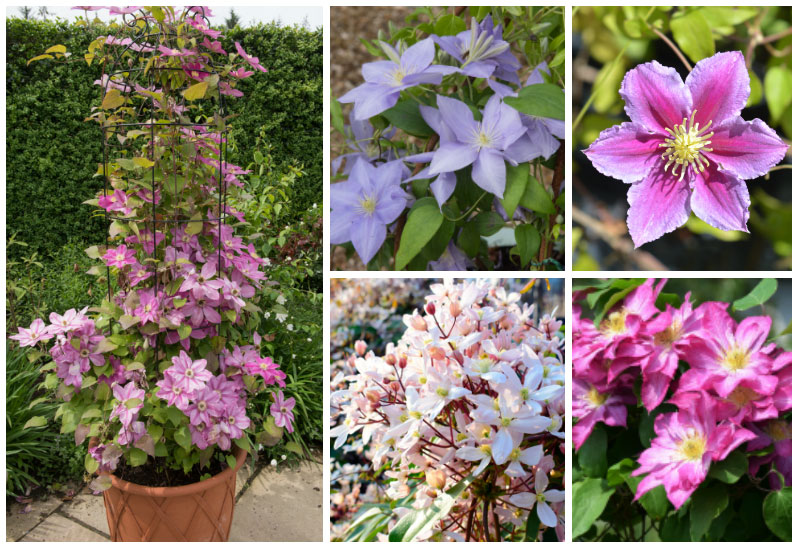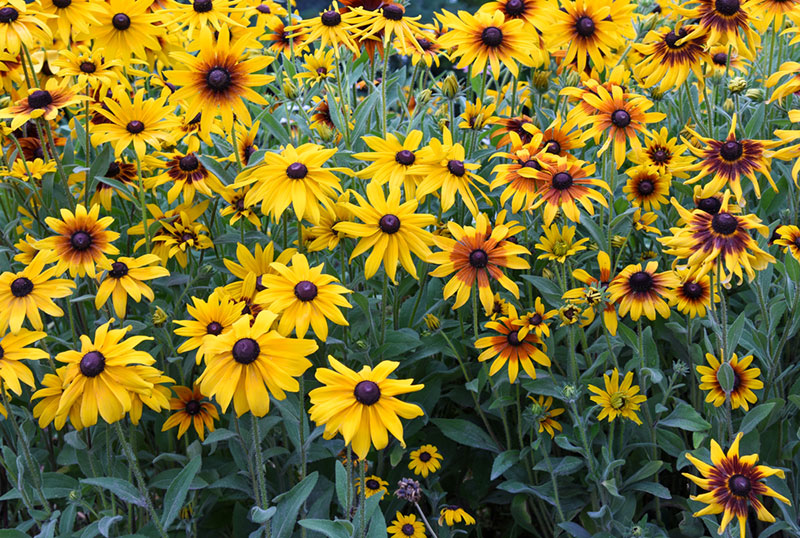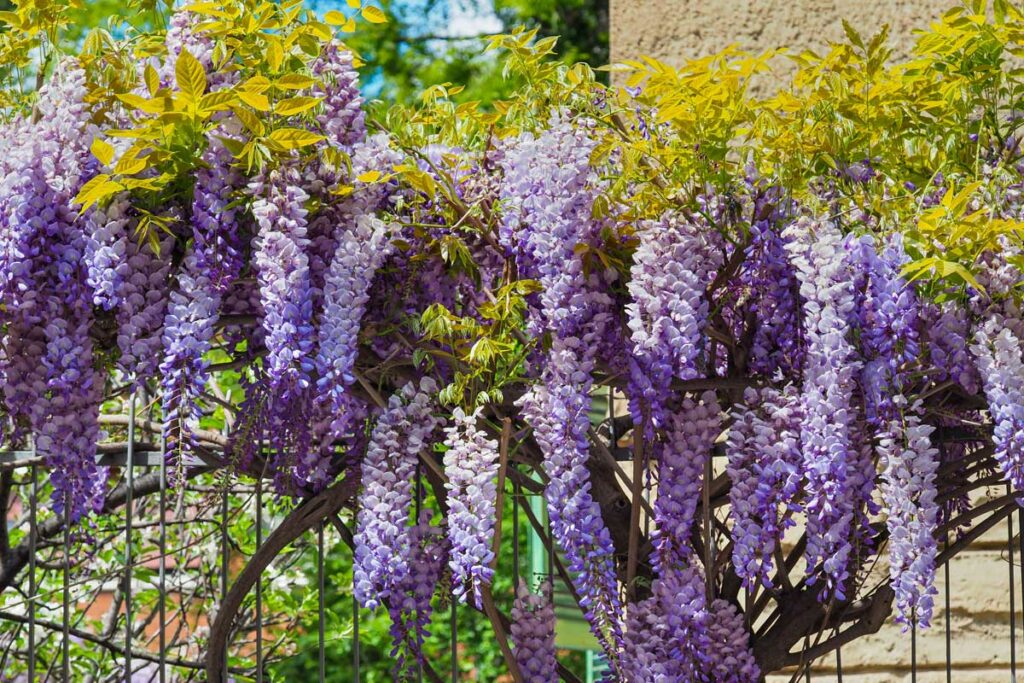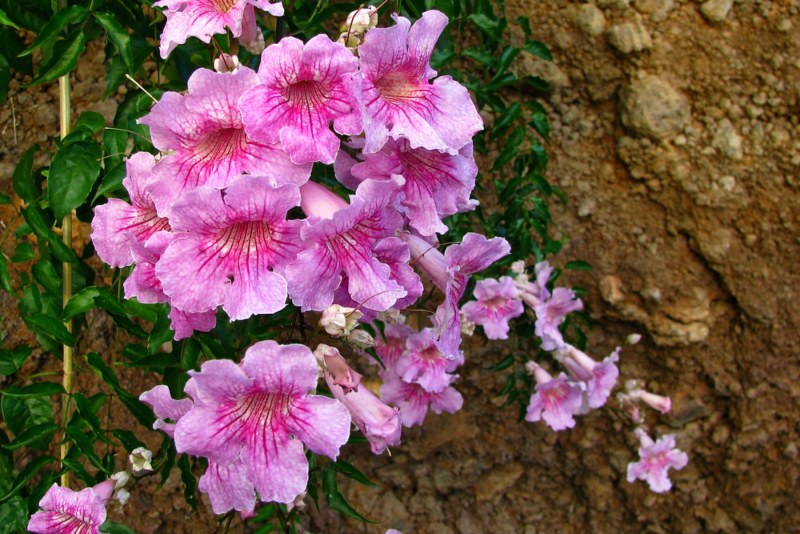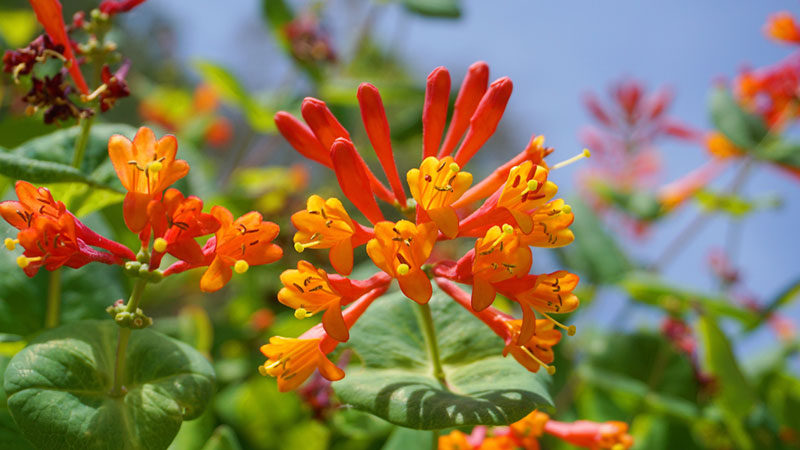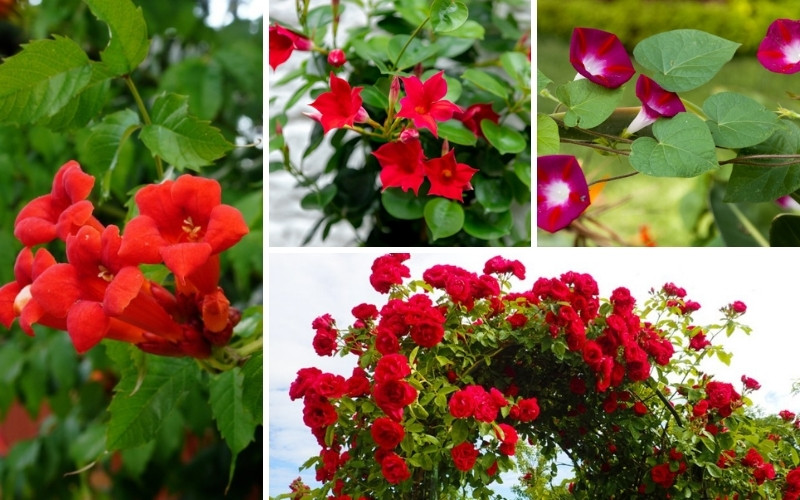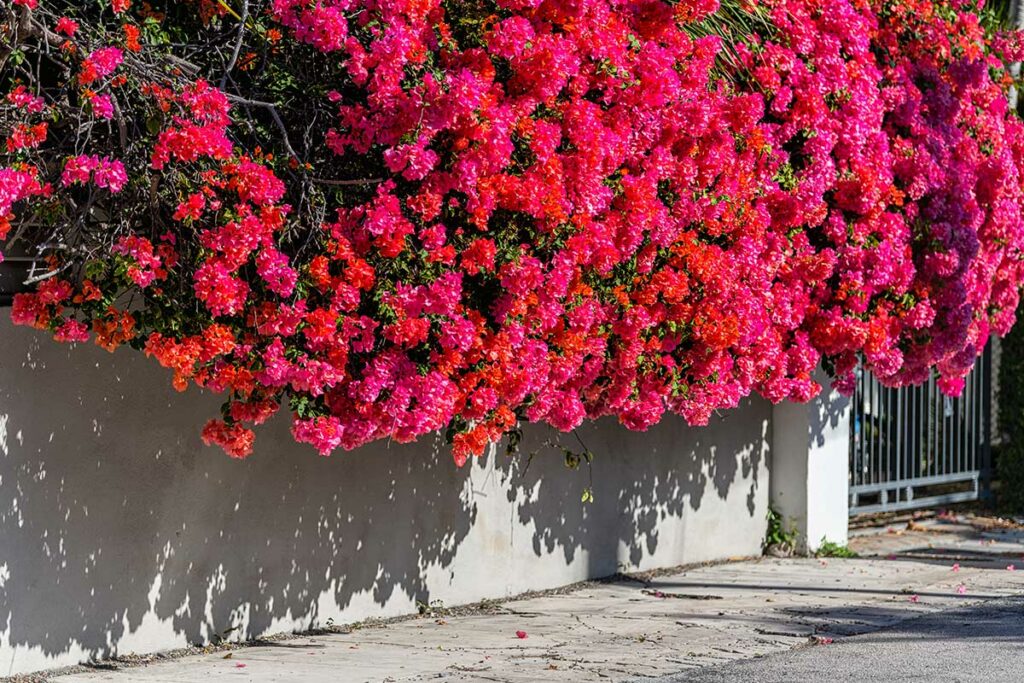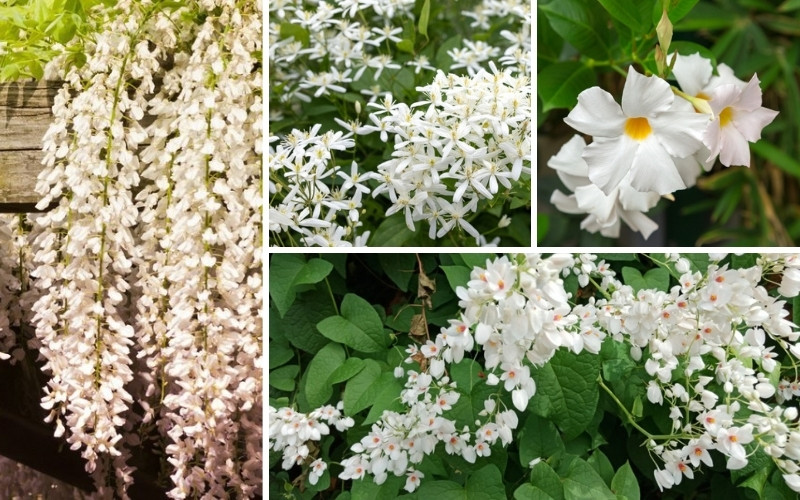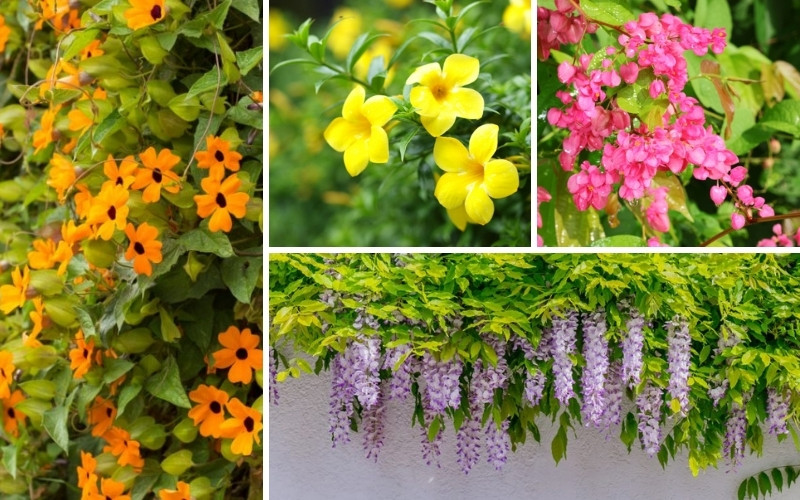
Are you a gardening enthusiast in a hot and sunny environment looking for the perfect vine to plant in your outdoor space? A perennial vine might just be what you’ve been looking for.
Perennial vines can naturally withstand areas with intense heat and sunlight, require low maintenance, and offer a predictable growth pattern. What’s more, there is a huge variety of this type of vines, from flowering ones to those with amazing foliage, and even those that produce juicy berries.
Here’s list of 12 Popular vines that Grow in Full Sun
Bougainvillea

If you’re looking for a vine that will grace your garden with its vibrant colored flowers, then bougainvillea might be the vine for you. Scientifically known as bougainvillea spectabilis, this plant thrives in the US Department of Agriculture hardiness zones nine to eleven, meaning it does well in warmer climates.
Bougainvillea mainly blooms from May to November and experiences a period of continuous flowering for about four to six weeks. It is recommended that you prune it after this cycle to promote another blooming period.
If you love color, you’ll be at home with this vine. Bougainvillea produces pink, white, red, magenta, or purple flowers. Since it is a heat-loving vine, it is vital that you plant it in a location that receives plenty of sunshine for at least five hours a day. It does not do well in soggy soil, so it is essential not to overeater it.
Everlasting Pea (Lathyrus latifolius)
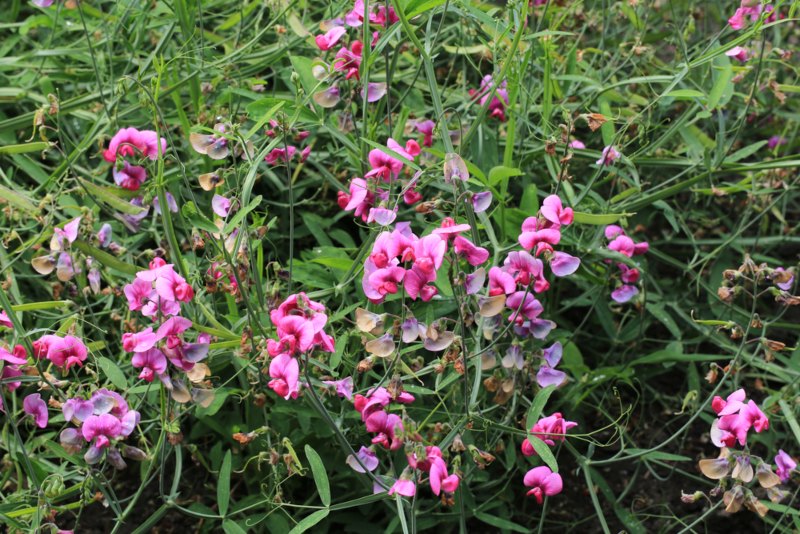
Also known as the perennial sweet pea, this climbing vine is an excellent choice if you are searching for a plant to add a serene touch to your outdoor space. Unlike the annual sweet pea, this vine thrives in the US Department of Agriculture hardiness zones five to nine, meaning that it does well in full sunshine.
This vine can grow up to 9 feet tall and 6 feet wide, and it blooms from June to September, producing pinkish-white flowers. It thrives in moist but not wet clay, loam, or sandy soil.
Honeysuckle

Take the style and atmosphere of your outdoor space to the next level with this sweet-scented vine. This 8-10 foot climbing vine thrives in full sunshine.
Honeysuckle blooms from June to September and produces dark pink, golden white, yellow, deep orange, or purple nectar-filled flowers. Like most perennial vines, honeysuckle doesn’t need much water. But keep its soil moist by adding a layer of mulch on top of its soil.
Coral Vine
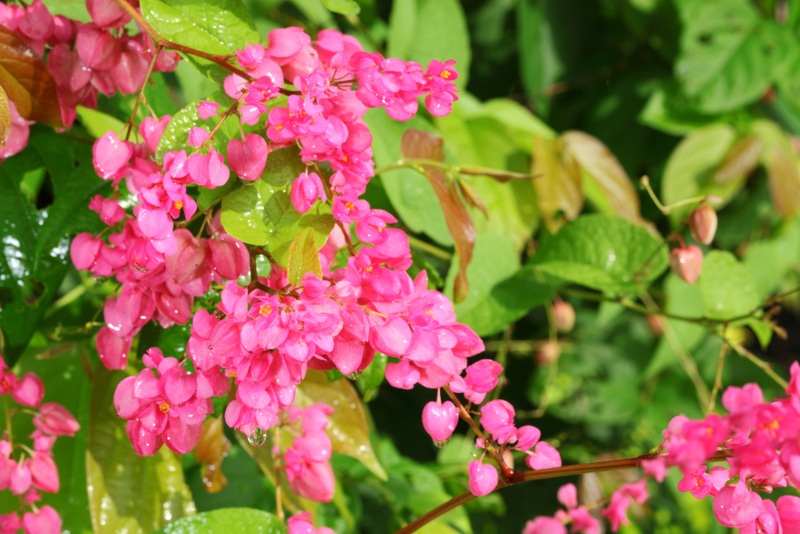
Another great heat-tolerant vine is the coral (Antigonon leptopus) vine. It is known to thrive in USDA hardiness zones nine to eleven and grows up to 40 feet tall. This vine is mostly known for its big, heart-shaped foliage.
Coral vines do well in any type of well-drained but moist soil.
Carolina Jessamine
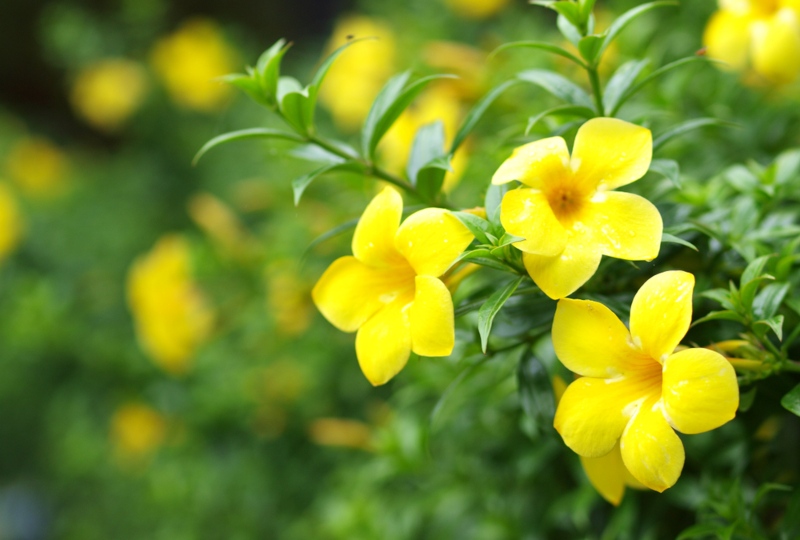
This 20-feet twining vine is guaranteed to elevate your outdoor area’s look with its bright yellow flowers that bloom during the early spring season. Scientifically known as Gelsemium sempervirens, this climbing vine thrives in USDA hardiness zones seven to nine.
Apart from full sunshine, coral vines also require well-drained but moist soil. It is also recommendable to add compost manure to its soil to balance its composition.
Lady Banks Rose
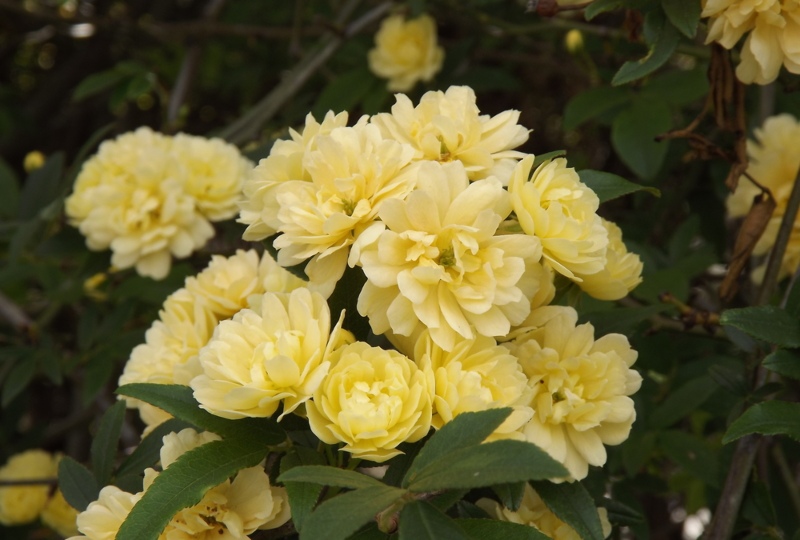
Bring that laid-back but romantic look to your garden with this bright yellow-flowered vine. The Lady Banks Rose does well in the USDA hardiness zones nine to eleven and blooms during the late spring season or early summer season.
The vine thrives in moist but not soggy soil and doesn’t require regular pruning or fertilizing.
Mexican Flame Vine
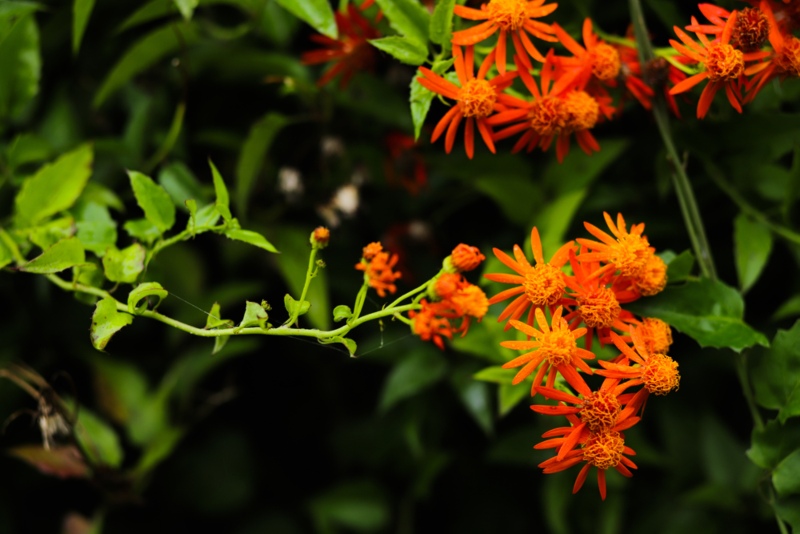
This attractive orange red-flowered vine is best known for its dark green foliage that can be as large as 4 inches. Mexican flame vines do well in USDA hardiness zones eight to eleven, where there is plenty of sunshine.
This 26-foot vine blooms mainly during the spring and summer season and does well in well-drained soils. It will experience more profuse blooming when planted in organic soil.
Wisteria( Wisteria Frutescens)

Nothing looks more spectacular than a wisteria vine with cascades of purple to blue flowers hanging from your pergola. However, wisteria is a vigorously climbing vine plant that grows into any available space they find, so it is essential to find a less invasive species.
Wisteria frutescens, mostly known as the American Wisteria, is one of the less aggressive growing wisteria vines. It thrives in USDA hardiness zones five to nine and produces its fragrant lilac or purple to blue flowers, mostly from April to May.
Since it does well in full sunshine, it is essential to plant it in a location that receives plenty of it. The American wisteria vine does well in any type of well-drained but moist soil. Add some fertilizer if your soil is in poor condition.
Virginia Creeper
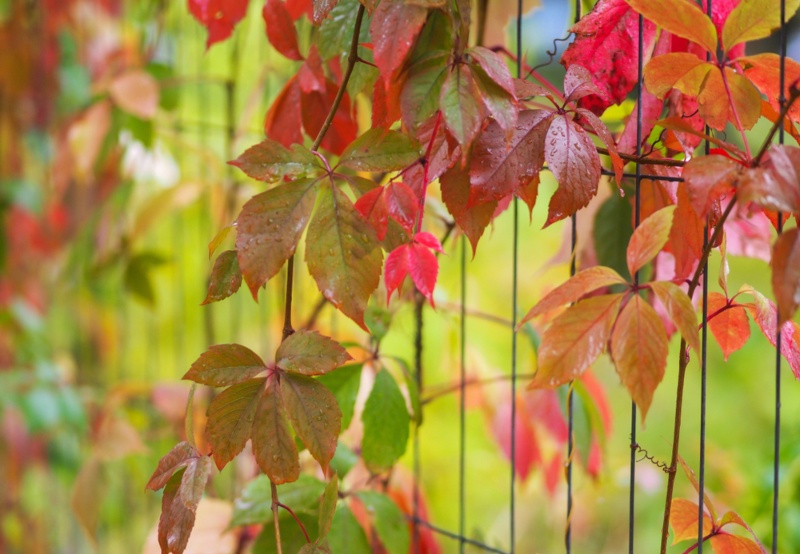
Looking for the ideal vine to cover your not-so-attractive wall? You might want to try growing the Virginia creeper vine. Scientifically known as Parthenocissus quinquefolia, this one-of-a-kind vine thrives in USDA hardiness zones three to nine.
This means that it can grow well in any climate.
Virginia creeper vines bloom from June to July, producing vibrant green flowers that later turn into ball-like fruits. It’s also loved for its outstanding five-pointed green leaves that turn into a rich crimson color once the temperatures cool down.
As expected, this vine does well in moist but not soggy soil and requires minimum maintenance.
Morning Glory
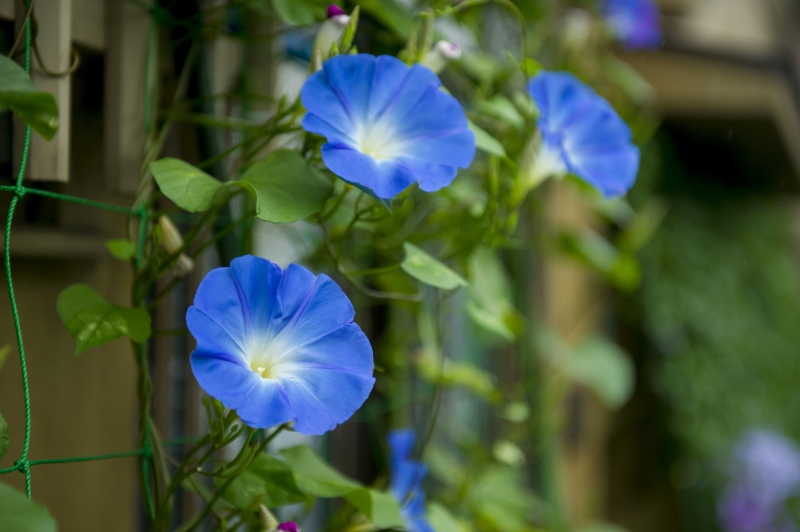
Best known for its 4 to 6-inch flowers that bloom during the early hours of the day and close up when the sun is at its peak, the morning glory is an amazing vine that will add a breath of life to your garden. This vigorous climbing plant can grow up to 10 feet tall and thrives in USDA hardiness zones two to eleven, making it flexible enough to grow in almost any type of climate.
It produces magenta, white, pink, or purple-blue trumpet-shaped flowers from early summer to early fall. It is recommended to plant the morning glory vine in a sunny spot because it requires plenty of sunshine to bloom at its best.
Ensure that you plant it in well-drained but not soggy soil and next to a firm structure because it can become quite hefty. Adding some fertilizer to its soil is also recommendable, but over-fertilizing it can make the vine produce more foliage than flowers, making it look less vibrant.
Black-Eyed Susan Vine
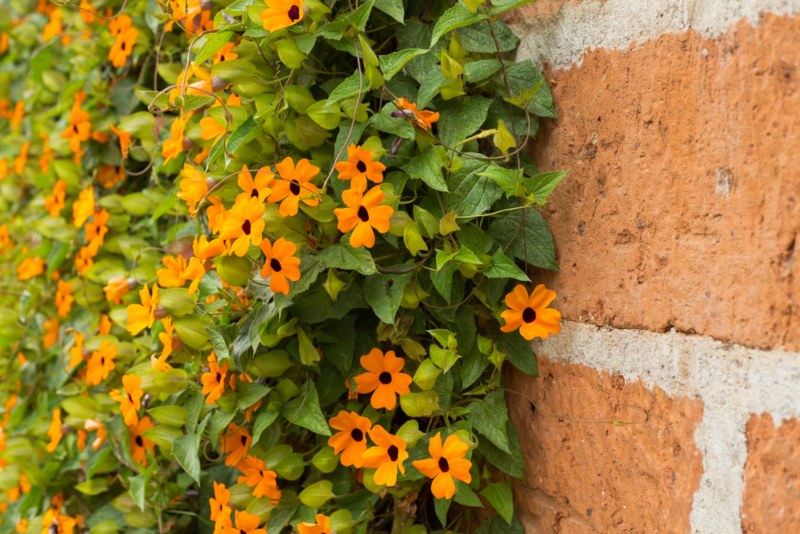
Scientifically referred to as Thunbergia alata, the black-eyed Susan vine is a native African plant known to do well in USDA hardiness zones 10 to 11. While it does require a lot of sunshine to thrive, it is vital to shelter it from the sun when it’s too hot.
The black-eyed Susan vine blooms mainly from June to October, producing deep-yellow, orange, white, or red flowers. This vine does well in well-drained but moist soil. It will wilt if the soil is too dry.
Star Jasmine
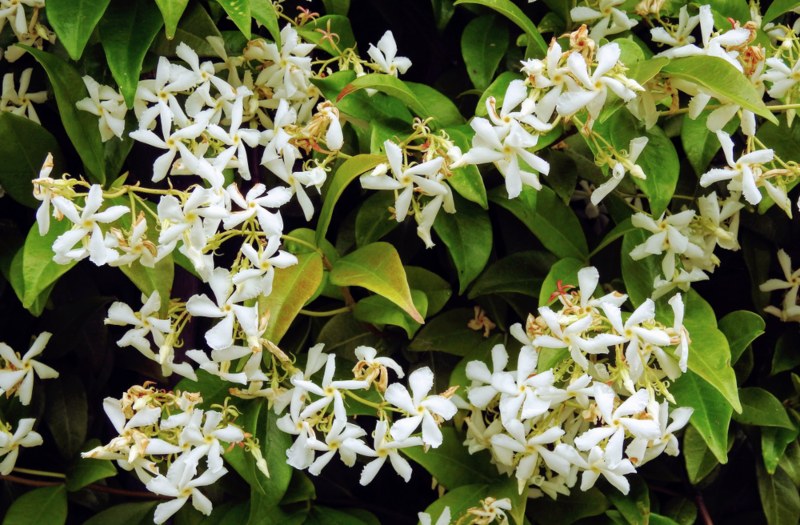
Its delicate, sweet-scented, creamy white flowers make it a fantastic addition to any garden. Star Jasmine does well in USDA hardiness zones eight to ten, where the climate is warmer. Once mature, the star Jasmine vine can grow up to six feet, making it an ideal plant decoration for your pergola, doorway, or any other outdoor structure. Its blooming season is mostly from May to June.
Like most other perennial vines, star Jasmine thrives in well-drained but not soggy soil and requires minimum maintenance.
Conclusion
Perennial vines are a great way to add color to overlooked parts of your garden or any other outdoor space. What’s more, they can serve as a natural way to enhance privacy to your outdoor structures such as pergolas. The good thing about most of these vines is that you can grow them as annual plants if you live in a cooler USDA hardiness zone.





